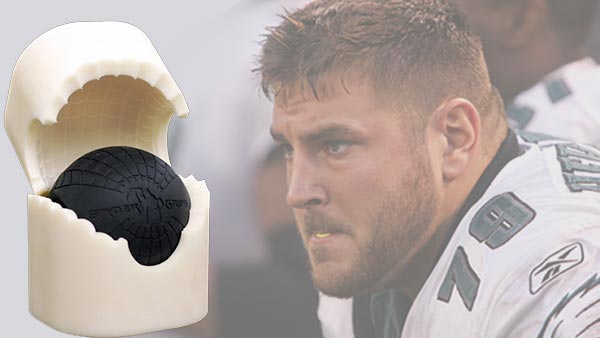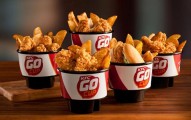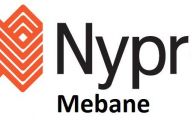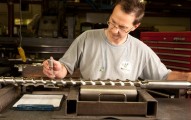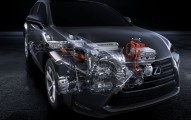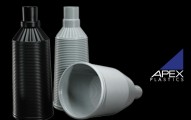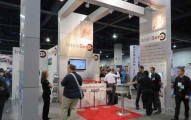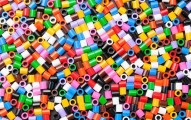Eagles’ Herremans Gets a Spyder Grip via SLA, Injection Molding Process
Offensive guard Todd Herremans is celebrating 10 years with the Philadelphia Eagles this season, and both he and his team are off to a good start with a 5-1 record.
Typically described as a solid player who gets the job done, Herremans maintains a rigorous training regimen to stay at the top of his game. Always looking for ways to improve his workouts, he started squeezing softballs to improve hand strength and dexterity. He found that this exercise worked different muscles in his arms, which led to a what-if moment: What would happen if I added the softballs to the weightlifting bar, he mused. No sooner said than done, he discovered that this was an effective way to build muscle mass. It was time to turn this makeshift exercise helper into a professionally designed and manufactured product. Through his brother, Herremans learned of Eagle Design, a contract design, prototyping, and molding company in Zeeland, MI, and he turned to them to design and develop a prototype of what would become the Spyder Grip.
The project presented a number of challenges. “Todd told us he wanted the outside of the [Spyder Grip] to look like a web, but he had no sketch or rendering showing what he was thinking,” says Don Portenga, Engineer at Eagle Design. Also, the part had to be halved to fit over the weightlifting bar, and the shape and spider web detail would require splitting an aluminum mold into several pieces. “All of these insert lines were not going to be acceptable on the final product,” says Portenga.
Eagle Design decided that combining stereolithograpy (SLA) with injection molding would achieve the best result in the shortest amount of time. With the process determined, it came time to select an injection molding material that would be compatible with the complex spider web pattern that Herremans envisioned. Somos NanoTool from DSM was chosen for its high strength and detail.
Eagle Design first used RTV molding to produce prototypes and prove out the concept, says Portenga. It sent prototypes of the silicone split rubber balls to Herremans’ gym for testing, where they got an enthusiastic thumbs’ up. “Todd wanted to move forward and get 50 sets fast,” says Portenga. The company then grew Somos NanoTool inserts using its SLA machines, which it was able to do overnight. By applying this technology, Eagle Design eliminated the multiple small inserts that would have been needed had aluminum tooling been used, considerably accelerating the process, saving time and money.
“Once the SLA inserts were installed in an outer base, it was up to the mold technician to make it work,” says Portenga. “With SLA inserts, you have to creep your temps and pressures without destroying the mold. It is a delicate, but achievable, process.” The thickness of the material required long cycle times, but “with small production runs, this is the way to go,” adds Portenga.
At the end of the day, the successful completion of this project is one more example why Eagle Design’s full range of capabilities, from product design to production tooling to automated injection molding, give it the resources and expertise to find the best solutions, says Portenga.
Meanwhile, Todd Herremans and a few other NFL players are now pumping iron with Spyder Grips, as visions of Super Bowl rings undoubtedly dance in their heads.

